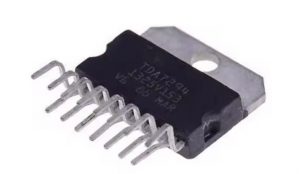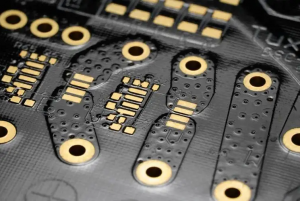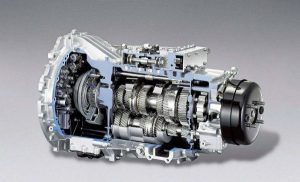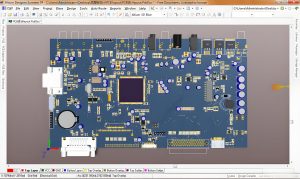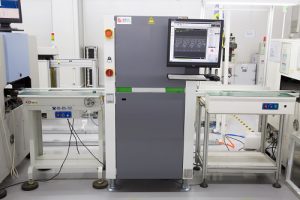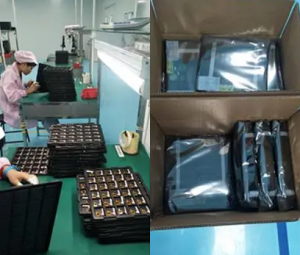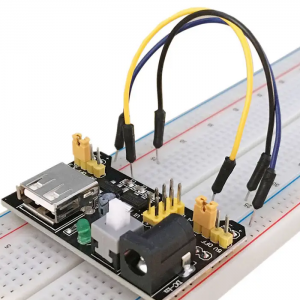There are many different surface finishes used in the manufacturing of printed circuit boards (PCBs), of which HASL (Hot Air Solder Leveling) is a widely used technology.
What is HASL in PCB?
HASL is hot air solder leveling, which is a commonly used surface finish in the printed circuit board (PCB) industry.
HASL forms a coating that resists copper oxidation and provides good solderability by coating molten tin-lead solder on the surface of the PCB and using heated compressed air for leveling. This coating not only helps protect the copper from oxidation, but also ensures good soldering performance.
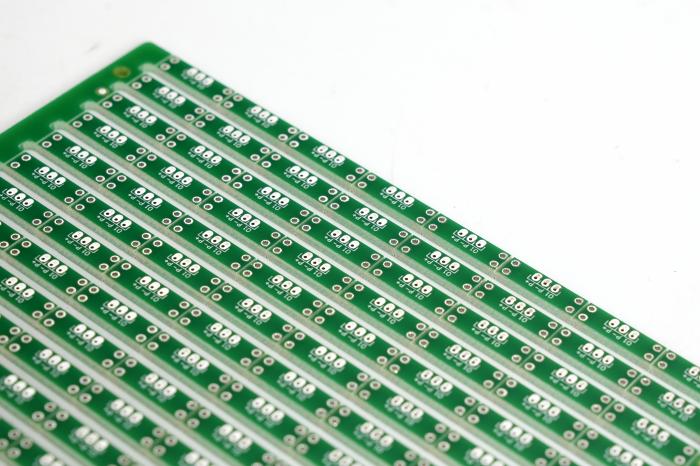
There are two types of HASL: leaded and lead-free, making it one of the lower-cost PCB surface finishes. The leaded version was more common in the electronics manufacturing industry in the past, but with the improvement of environmental protection requirements, the lead-free version of HASL has also been widely used.
What is the difference between HASL and ENIG finish?
The main differences between HASL and ENIG surface finishes are their process flow, cost, corrosion resistance, applicable scenarios, and environmental protection.
Process flow:
- HASL (hot air leveling) is a traditional surface treatment process that provides good soldering performance by coating a layer of lead-tin alloy on the surface of the PCB.
- ENIG (electro-nickel-gold) improves soldering performance and corrosion resistance by electroplating a thin layer of nickel and gold on the copper surface.
Cost:
- HASL has a relatively low cost because it is a mature and widely used process.
- In contrast, ENIG has a higher cost because it has stricter control requirements for the manufacturing process and uses higher material costs.
Corrosion resistance:
- ENIG provides better corrosion resistance due to the presence of nickel and gold layers, especially for applications that require long-term reliability and stability.
- Although HASL can also provide certain corrosion resistance, it is not as good as ENIG in terms of corrosion resistance.
Applicable scenarios:
- HASL is suitable for most general applications due to its low cost and good soldering performance.
- ENIG is more suitable for application scenarios with higher requirements for soldering performance and corrosion resistance.
Environmental protection:
- HASL used to mainly use lead-containing materials, but with the restrictions of environmental regulations, lead-free HASL has gradually become the standard, but there are still potential environmental problems.
- ENIG has no obvious environmental problems in this regard because it does not contain any hazardous substances.
In short, choosing HASL or ENIG depends on the specific application requirements, cost budget and environmental impact considerations. Each process has its unique advantages and applicable occasions. The right choice can significantly improve the performance and market competitiveness of multi-layer PCBs.
What is the difference between lead-free HASL and HASL?
The main difference between lead-free HASL and traditional HASL is the different materials used.
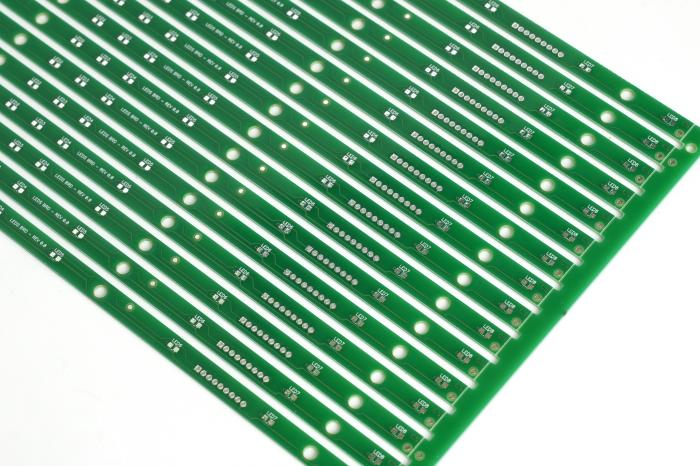
Traditional HASL (hot air leveling) uses lead-containing solder, which was once one of the most commonly used surface treatment technologies in electronic assembly.
However, due to restrictions on environmental regulations, lead-containing HASL has been gradually eliminated and replaced by lead-free HASL. Lead-free HASL uses non-lead metals or lead-free solder alloys to replace traditional lead-containing solder to meet environmental protection requirements.
The advantages of lead-free HASL include lower cost and good soldering performance. Compared with traditional HASL, lead-free HASL is more environmentally friendly and can pass environmental assessments such as RoHS certification.
However, the mechanical strength and glossiness of lead-free HASL may not be as good as traditional lead-containing HASL, and there may be some challenges in soldering fine components, especially in the case of poor surface flatness, which is easy to produce tin beads and short circuits for fine-pitch pin components.
In general, lead-free HASL is an improvement on traditional HASL, with the main purpose of improving environmental performance. Although there may be some limitations in some aspects, it is currently a necessary choice to meet environmental regulations.
Is HASL with lead bad?
Lead-containing HASL is not an ideal choice because it has multiple disadvantages and limitations.
First, the main disadvantages of lead-containing HASL include uneven surfaces, which are not suitable for fine-pitch applications.
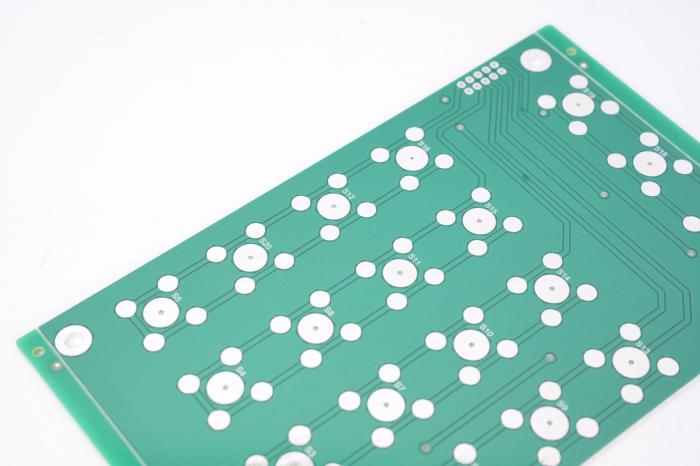
In addition, it faces problems of thermal shock and solder bridging, which may cause the plated through hole (PTH) to be blocked or reduced, as well as thickness/topography differences between large and small pads.
These problems make leaded HASL unsuitable for SMD and BGA with a pitch less than 20 mil, and unsuitable for HDI products and wire binding. Therefore, leaded HASL is gradually regarded as a suboptimal choice in modern electronic manufacturing.
Secondly, environmental protection is also an important consideration for leaded HASL. Due to environmental regulations, leaded versions of HASL have been gradually phased out in some areas, and lead-free HASL has become an alternative, but its soldering performance is slightly inferior to that of the leaded version.
Does HASL oxidize?
HASL (hot air leveling) does oxidize. HASL protects the connection wires by coating a layer of tin-lead alloy, including anti-sulfurization treatment.
However, the surface flatness of HASL is relatively low, which may not be suitable for high-density, fine-pitch circuit design. In addition, due to the lead issue, the surface oxidation resistance of lead-free HASL is weak, and the long-term reliability is not as good as other advanced processes.
Therefore, although HASL provides some protection, it is not a complete solution to prevent oxidation, especially in long-term use or under certain environmental conditions, its protection effect may be affected.
Is HASL RoHS?
HASL is not RoHS compliant.
HASL (hot air solder leveling) is a traditional PCB surface treatment process that contains lead (SnPb) solder. However, the RoHS (Restriction of Hazardous Substances) directive aims to restrict the use of certain hazardous substances in electrical and electronic equipment, specifically lead (Pb), mercury (Hg), cadmium (Cd), hexavalent chromium (Cr6+), polybrominated biphenyls (PBB) and polybrominated diphenyl ethers (PBDE).
Because the leaded solder used in the HASL process does not meet the RoHS standard for the restriction of hazardous substances, the traditional HASL process is not considered RoHS compliant.
To meet RoHS standards, lead-free HASL (Lead-Free HASL) has become an alternative, which uses lead-free solder alloys such as tin-copper, tin-nickel or tin-copper-nickel alloy to replace traditional lead-containing solder.
Although lead-free HASL meets environmental requirements, it is not suitable for all situations, especially when dealing with fine-pitch components and dense wiring.
For projects that need to comply with RoHS standards, lead-free processing processes such as lead-free tin spraying or other RoHS-compliant surface treatment technologies should be given priority.
What is the best surface finish for PCB?
There are many surface treatment processes for PCBs, each with its specific advantages and applicable scenarios. The following are some common surface treatment processes and their characteristics:
- Hot Air Leveling (HASL): This is a traditional surface treatment method that is cost-effective and suitable for most general electronic products.
- Electroless Nickel Gold (ENIG): Especially suitable for PCBs with fine line spacing and high density, a layer of nickel is first deposited on the copper surface, and then a thin layer of gold is plated. The gold layer acts as a protective layer to prevent the nickel layer from oxidizing and provides long-term soldering reliability and good solderability.
- Organic solderability preservative (OSP): An environmentally friendly and cost-effective surface treatment technology, especially suitable for low to medium complexity PCBs.
- Electroplating silver (immersion silver): A layer of silver is deposited on the copper surface through a chemical reaction, providing excellent conductivity and solderability, and also has good corrosion resistance.
In summary, choosing the best surface treatment process requires comprehensive consideration of the specific needs, cost, and environmental factors of the product.
HASL, as a traditional PCB surface treatment process, has the advantages of good solderability, low cost, and wide applicability. In practical applications, it is necessary to select a suitable surface treatment process based on factors such as the type of PCB, the use environment, and environmental requirements.


